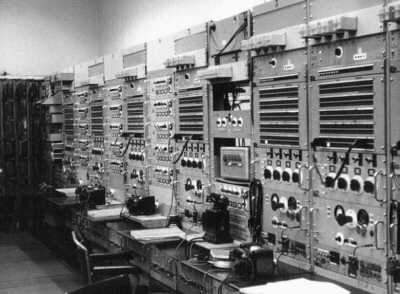
There was also a line of bays stretching down the right
hand wall. The odd numbered bays (plus bay 4) were OBA/8 type control positions,
also confusingly known as "bays". Strictly speaking they were APM/1s, a
version used in studios and Control Rooms with connections at the rear.
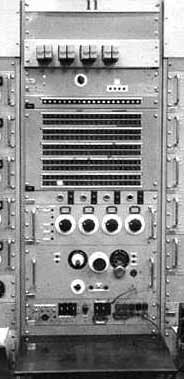
Each bay had an identical jackfield of London studios, incoming lines etc. and sources were picked up with "double-double-enders". A standard jack for the music line and a smaller one below for the control line. A sleeve circuit on the control line carried red light signalling. Virtually every temporary feed passing through the control room, be it a line from a region to a recording channel or a radio circuit from New Delhi went through a "bay" and the details were logged by the operator. The close-up on the right shows a typical bay. The red light signal keys and associated green buzz back lamps are above the channel faders. The bottom panel carries prefade buttons on the left and telephone flaps on the right.
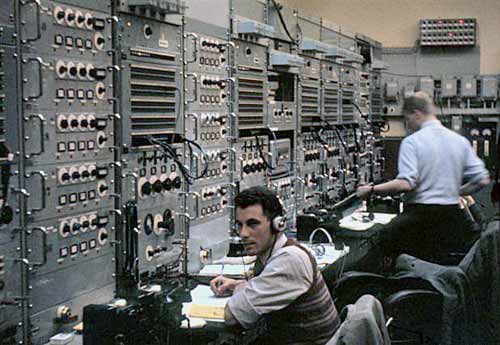
At the top right of the colour shot of the bays is a
studio red light indicator panel. A distant descendant of the two on the
walls of the Savoy Hill Control Room of 1925.
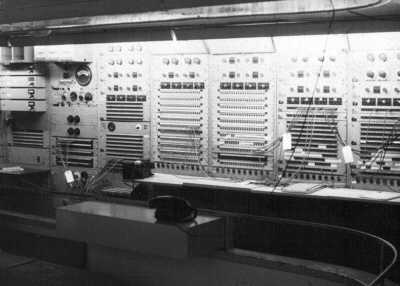
There were lots of permanently rented lines from central London sites such as Lords cricket ground and the Royal Albert Hall. Music and control lines were left connected together at the OB point so a DC test could be carried out round the loop.
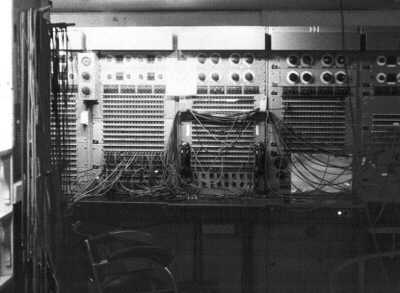
Also in this area was a position handling sound and communications circuits for TV. Television was also on the move at this time (early 1960s), from Lime Grove to Television Centre with news still at Alexandra Palace. There were steps at the far end down to the main floor.
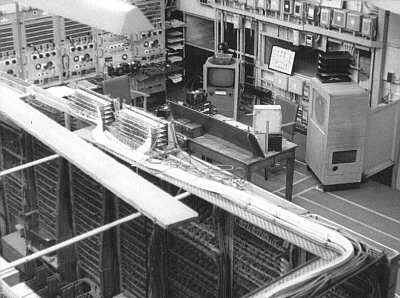
The view from the OB position on the balcony. The 2 jackfields
on top of bays 74 and 75 (just above the scaffold board) were added to provide
links to the new control room, hence the PVC covered cables and the shiny
new cable trays. At the time the B&W photo was taken the new Control
Room had more or less taken over from the old but the colour shot, below,
was taken when this area was still fully operational a couple of years earlier.
The windows behind the ATOM's desk are to S2. As you can see, an operator
at the end bay could see the announcer in S2 thus making it a viable spare
continuity.
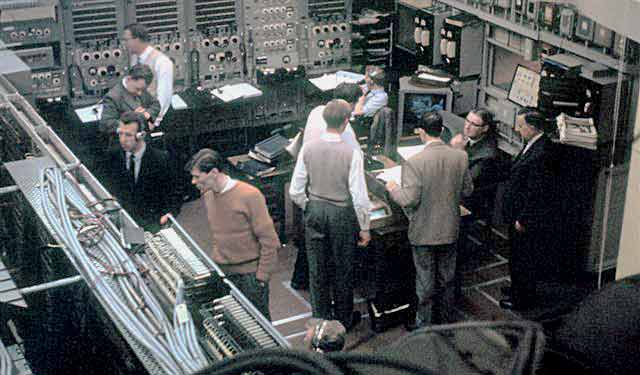
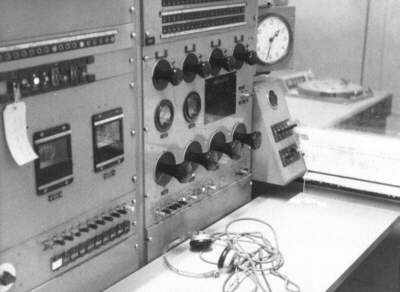
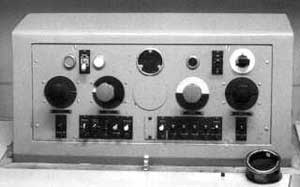
Left - The announcer had a mic fader, a gram either side and a group fader on the outside sources. The TO (Technical Operator) had a bypass for this dangerous and rarely used control.
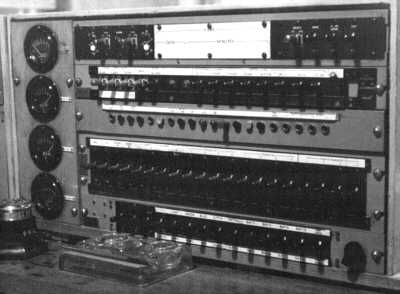
Back out in the control room, facing the "front bench" was a tiny cubicle for the TOM (Technical Operations Manager). The photo, right, shows his desk. The display at the top is associated with the auto GTS gear. The TOM could join in the foreign news traffic managers conference circuits and gave a report on the quality of all radio telephone feeds.
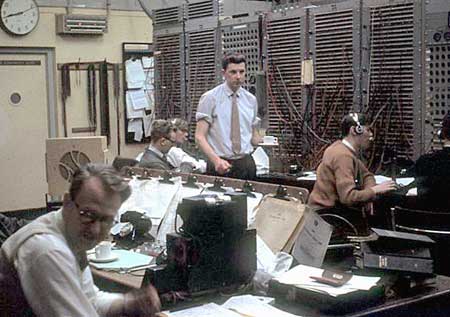
There was also a desk for his assistant - the ATOM (yes, they were all men but there were quite a few women operators, recruited during the war years). The ATOM had extensive monitoring facilities, allowing him check programmes passing through the Control Room.

